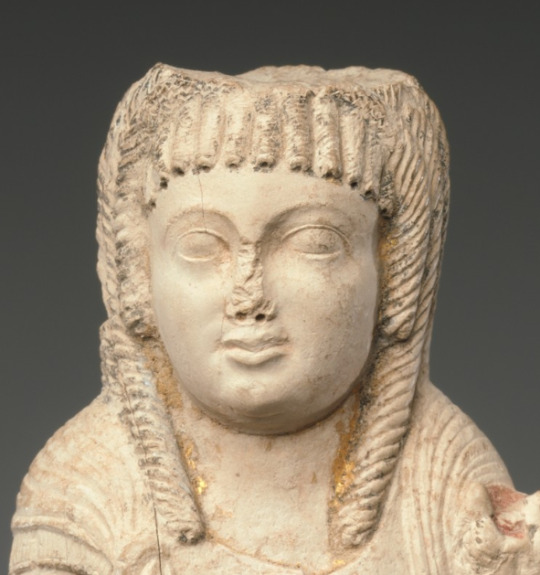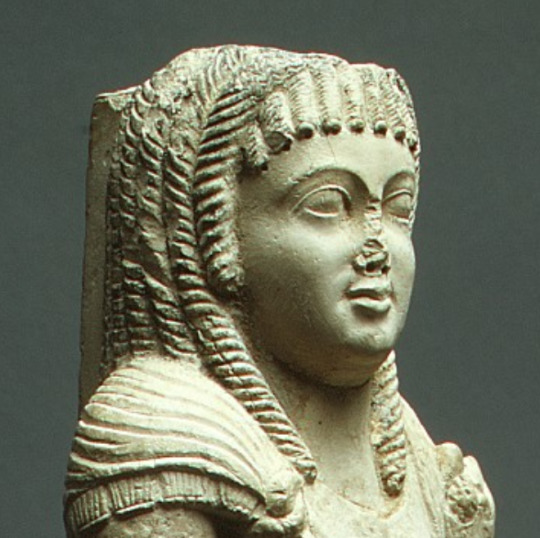#Statuette of Arsinoe II for her Posthumous Cult
Explore tagged Tumblr posts
Text






Statuette of Arsinoe II for her Posthumous Cult - Met Museum Collection
Inventory Number: 20.2.21 Ptolemaic Period, ca. 150–100 B.C. Location Information: Location Unlisted
Description:
The inscription on the back of this figure refers to Queen Arsinoe II as a goddess, indicating it was made after 270 B.C. when her cult was established at the time of her death in by her brother and husband, Ptolemy II. Gilding indicating divinity once covered her face, and traces still remain at the edges of her neckline.
While the overall frontal pose and disposition of the limbs in this small statue follows Egyptian traditions, the cornucopia the queen holds is a Greek divine attribute, and her corkscrew are strongly associated with Hellenistic traditions in Egypt. Features of the depiction – the small Cupid’s bow mouth and the large rounded eyes – are also elements from Greek style. Stylistic comparisons indicate this statue was created in the second half of the second century B.C.
#Statuette of Arsinoe II for her Posthumous Cult#Arsinoe II#ptolemaic#met museum#20.2.21#location unlisted#womens hair and wigs#PWHW
0 notes
Text

Statuette (limestone, paint, and gold leaf) of Arsinoe II, sister-wife of Ptolemy II Philadelphus, used in her posthumous cult. Artist unknown; ca. 150-100 BCE. Now in the Metropolitan Museum of Art.
#classics#tagamemnon#Hellenistic period#Ptolemaic#Ptolemaic Egypt#Ancient Egypt#art#art history#ancient art#Hellenistic art#Greco-Egyptian art#Arsinoe II#statuette#sculpture#portrait sculpture#limestone#stonework#carving#Metropolitan Museum of Art
40 notes
·
View notes
Text







Statuette of Arsinoe II for her Posthumous Cult - Met Museum Collection
Inventory Number: 20.2.21 Ptolemaic Period, ca. 150–100 B.C. Location Information: Location Unlisted
Description:
The inscription on the back of this figure refers to Queen Arsinoe II as a goddess, indicating it was made after 270 B.C. when her cult was established at the time of her death in by her brother and husband, Ptolemy II. Gilding indicating divinity once covered her face, and traces still remain at the edges of her neckline.
While the overall frontal pose and disposition of the limbs in this small statue follows Egyptian traditions, the cornucopia the queen holds is a Greek divine attribute, and her corkscrew are strongly associated with Hellenistic traditions in Egypt. Features of the depiction – the small Cupid’s bow mouth and the large rounded eyes – are also elements from Greek style. Stylistic comparisons indicate this statue was created in the second half of the second century B.C.
#Statuette of Arsinoe II for her Posthumous Cult#Arsinoe II#ptolemaic#met museum#20.2.21#location unlisted#womens clothing#PWC
0 notes